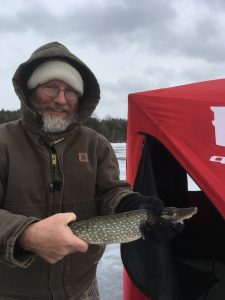Charles F. Baer
 Professor
Professor
Ph.D. Florida State University, 1998
Areas of Interest/Research
I am a comparative evolutionary geneticist whose research is motivated by theoretical population genetics. My primary research interest is in the factors responsible for the generation and maintenance of genetic variation – “understanding variation in genetic variation”. I am especially interested in the evolution of mutation rate, and in the distribution of fitness effects of new mutations. There is considerable variation in the rate and cumulative effects of new mutations, even among genotypes within species. I begin from the premise that the rate and effects of mutation are themselves evolvable phenotypes which are subject to optimizing selection, and which may evolve in predictable ways. My research program has two primary objectives: (1) elucidate the various factors that underlie variation in the rate, molecular spectra and phenotypic effects of spontaneous mutations, and (2) determine the extent to which variation in mutational properties explains variation among taxa in standing genetic variation at the phenotypic and molecular level. Our studies of mutational variation have led me to become interested in the evolution of phenotypic robustness and epigenetic variation.
We use rhabditid nematodes as our experimental organism, and employ a variety of phenotypic and molecular methods to address the questions of interest. Additional research interests include the evolution of genetic architecture (i.e., genetic covariance), and selection experiments in any way, shape, or form. Recently, I have become involved in collaborative work with chemical engineers and cell biologists to employ experimental evolution to characterize the phenotypic and molecular effects of substrate rigidity on cultured mammalian cells.
Representative Publications
- Mallard, F., L. Noble, T. Guzella, B. Alfonso, C. F. Baer, and H. Teotónio. 2023. Phenotypic stasis with genetic divergence. Peer Community Journal, Volume 3 (2023), article no. e119. doi : 10.24072/pcjournal.349. https://peercommunityjournal.org/articles/10.24072/pcjournal.349/.
- Mallard, F., L. Noble, C. F. Baer, and H. Teotónio. 2022. Variation in mutational (co)variances. G3:Genes|Genomes|Genetics, DOI: 10.1093/g3journal/jkac335. PMID: 36548954
- Saber, S.G, M. Snyder, M. RajaeiG, and C. F. Baer. 2022. Mutation, selection, and the prevalence of the C. elegans heat-sensitive mortal germline phenotype. G3:Genes|Genomes|Genetics. https://doi.org/10.1093/g3journal/jkac063. PMID: 35311992.
- Gilbert, K. J., S. Zdraljevic, D. E. Cook, A. D. Cutter, E. C. Andersen, and C. F. Baer. 2021. The distribution of mutational effects on fitness in Caenorhabditis elegans inferred from standing genetic variation. Genetics. https://doi.org/10.1093/genetics/iyab166. PMID: 34791202.
- Rajaei, M.G, A. S. SaxenaG, L. M. JohnsonG, M. C. Snyder, T. A. CrombieP, R. E. Tanny, E. C. Andersen, J. Joyner-Matos, and C. F. Baer. 2021. Mutability of mononucleotide repeats, not oxidative stress, explains the discrepancy between laboratory-accumulated mutations and the natural allele-frequency spectrum in C. elegans. Genome Research 31: 1602-1613. PMID: 34404692.
Graduate Students |
||
| Name | Research Interests | |
| Md. Monjurul Islam Rifat | m.rifat@ufl.edu | Population genetics, bioinformatics |
| Shambadeb Basu | s.basu@ufl.edu | Conservation genetics |
| Katie Feerst | kathrynfeerst@ufl.edu | Population genetics, Evo-Devo |
Postdocs and Visitors |
||
| Name | Research Interests | |
Contact Information
Office: 621 Bartram Hall
Phone: (352) 392-3550
Fax: (352) 392-3704
Email:cbaer@ufl.edu
Mailing address:
Department of Biology /
University of Florida Genetics Institute
P. O. Box 118525
University of Florida
Gainesville, FL 32611-8525 USA